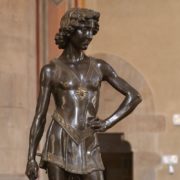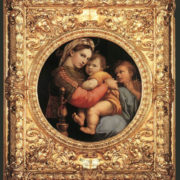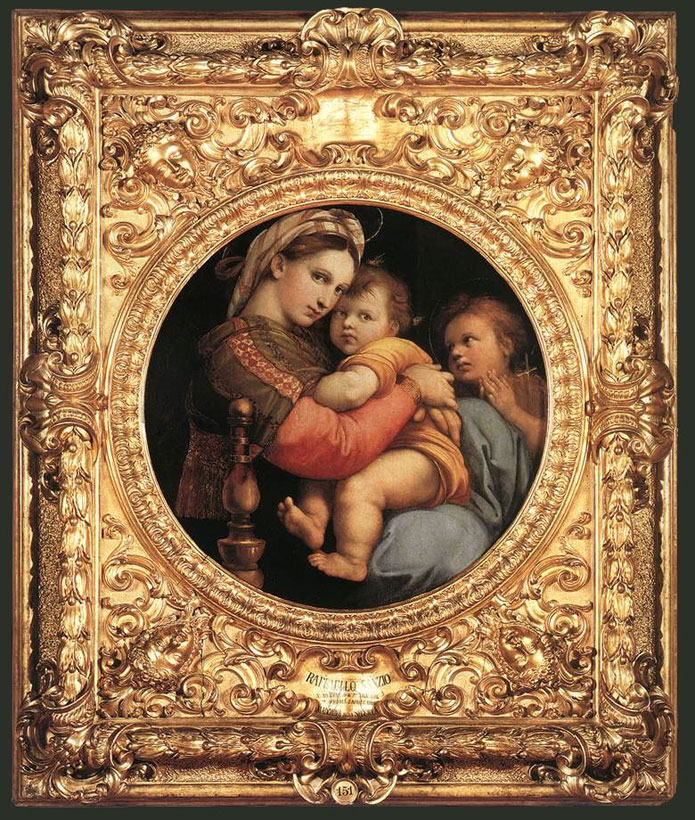Goya Lost (and Found)!
Although larger and more ambitious exhibitions have become a mainstay of the museum calendar and a primary draw for visitors, the threat posed to the art objects selected for shipment are minimized by the museum officials responsible for the decision.
On the night of 7-8 November, a painting by the Spanish master Francisco de Goya y Lucientes was stolen on route from its home in the Toledo Museum in Ohio to the Solomon R. Guggenheim Museum for the exhibition Spanish Painting from El Greco to Picasso: Time, Truth and History, opening on November 17th. The exhibition was designed to bring together 135 paintings from Spanish artists from the 16th to 20th centuries.
Children with a Cart, a tapestry cartoon painted in 1778, disappeared from a truck parked overnight at a Howard Johnson Inn near Bartonsville, Pennsylvania, while being transported by a professional art shipping company. It was ensured for $1 million, and the unnamed shipping company quickly offered a $50,000 reward for information leading to its return. Few details were released following the crime, which was investigated by the FBI.
The theft of the Goya painting is but a symptom of the drive on the part of museums to host grander exhibitions, ultimately accomplished through agreements to borrow artworks from — and loan artworks to — other institutions, particularly those that are never or infrequently removed from their permanent homes. Although the stolen work came from another American collection, the 27 October press release by the Guggenheim regarding the exhibition celebrates this “first-time” mentality prevalent in the formation of the blockbuster. The sub-heading on the release announced “Many National Treasures Travelling from Spain to the U.S for the First Time”. Emphasis is made on the shipment of works, especially the sixty-five paintings sent from Spain, including fifteen from the Prado and ten from the Reina Sofía.
Despite the theft, Jordan Rundgren, the public relations manager for the Toledo Museum, announced that the museum’s policy of sending works of art out on loan to other institutions would remain unchanged. Perhaps this is not as surprising as it seems, since the Toledo Museum — even in nearly losing a painting from its own collection — benefits from the shipment of artworks. Currently showing at the museum is the exhibition In Stabiano: Exploring the Ancient Seaside Villas of the Roman Elite, which features frescoes from five ancient villas of Stabiae. The museum’s website touts this “extremely rare exhibition of 2,000-year-old Roman frescoes that have never before toured the United States”.
The good news? On 20 November the FBI announced that the Goya painting had been recovered in central New Jersey, following a tip phoned in by a lawyer. It was one of at least three major art recoveries that have been celebrated in the press this year. Two other recent major art thefts, those of Benvenuto Cellini’s Salt Cellar and Edvard Munch’s The Scream and Madonna, have also been returned to their respective homes. The Salt Cellar, valued at $58 million, was discovered in January after being stolen from the Kunsthistorisches Museum in 2003. Likewise, Munch’s paintings, stolen from the Munch Museum in Norway in 2004, were discovered by Norwegian police in August.
Despite the public statement by the Toledo Museum that works would continue to be sent out on loan, the painting will not be sent to the exhibition at the Guggenheim, but rather will be returned to Ohio where it can be shared with the community. The Guggenheim’s Director, Lisa Dennison, said that it was “understandable that the Toledo Museum would want to bring the stolen painting back to its home after this nerve-racking experience.”
In a seeming lapse in logic, the Toledo Museum, understandably rattled but relieved, has returned the work to its institution, all the while vowing to repeat the same practices that put the work in unnecessary jeopardy. If the theft of art works does not lead to the reconsideration of lending policies, then these incidents will undoubtedly happen again, and possibly without the same fortunate results.






